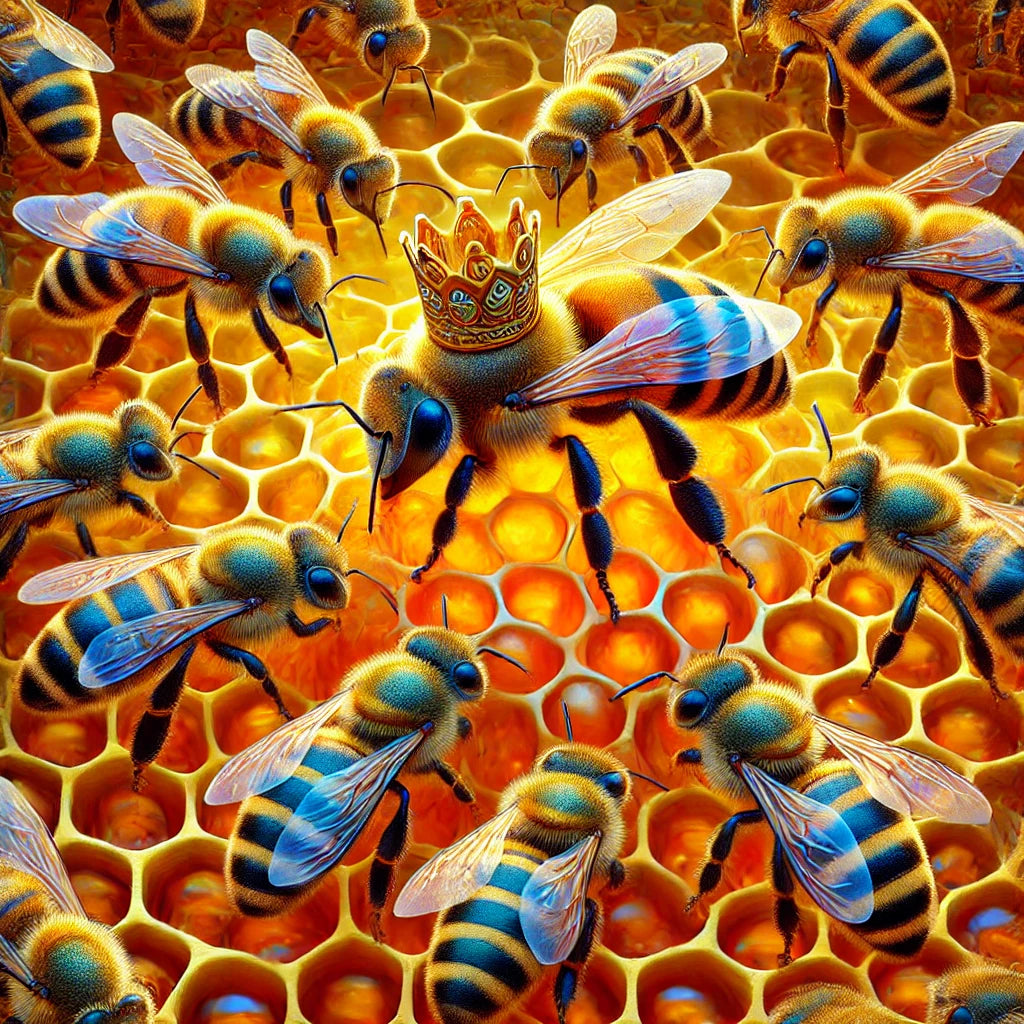The queen bee is at the center of hive life. As the sole fertile female, her primary job is laying eggs, which ensures the colony's population. A healthy queen can lay up to 2,000 eggs in a day, which is vital for maintaining a balanced colony.
Without a strong queen, the hive would weaken over time. You can learn more about the life cycle of bees and how the queen is central to every stage of the hive’s development.
Queen Bee vs. Worker Bees: What's the Difference?
The queen bee's primary function differs from worker bees. While workers maintain the hive, gather nectar, and care for larvae, the queen focuses on reproduction. Her pheromones also maintain harmony by suppressing the worker bees' ability to reproduce.
If you’re a new beekeeper interested in how to start a bee farm, understanding these distinctions is essential to successful hive management.
How the Queen’s Health Affects the Hive
The health of the queen bee directly impacts the hive's productivity and stability. A weak queen produces fewer eggs, and her pheromones may not adequately suppress the workers, leading to instability. Regular hive checks and being aware of signs like brood pattern consistency can help you ensure that your queen remains strong. Utilizing a bee trap attractant can help capture a new queen if needed.
Replacing a Queen: When and Why
Replacing a queen bee is a decision beekeepers must sometimes make. When the hive’s production slows or the queen is aging, it’s time to introduce a new queen. The hive will naturally reject an unproductive queen, but beekeepers can intervene earlier to avoid disruption. For beekeepers, understanding when to replace a queen is key to ensuring hive longevity. An important consideration for your farm is learning why honeybees are so vital to agriculture, as they directly affect food production.
Signs of a Failing Queen Bee
There are several signs that your queen bee may be failing. A decrease in egg production, irregular brood patterns, or increased worker bee activity around queen cells all indicate a potential issue. A failing queen bee can lead to swarming, where the hive splits and leaves with the old queen.
If you notice these signs, it may be time to introduce a new queen to keep your hive thriving. Capturing and relocating honey bee swarms properly is also important to avoid loss.
Keeping a Healthy Queen: Best Practices
Maintaining a queen's health begins with proper hive care and regular inspections. Ensure your queen consistently produces eggs and monitor the health of the workers around her. A healthy queen leads to a robust hive, meaning stronger honey production and a stable colony.
If your queen is strong, your entire apiary will benefit. Consider how bee hive relocation affects hive health, especially during times of environmental stress or overcrowding.
Empower Your Hive with Swarm Commander: Ensure Queen Bee Success
The queen bee is essential in maintaining the colony’s population and overall health. Understanding her role and keeping a close eye on her productivity can ensure a robust and productive hive. Regular hive checks and knowing when to replace your queen can make all the difference in your beekeeping success.
Want to ensure your queen and hive thrive? Visit Swarm Commander for the best tools, bee trap attractants, and resources to keep your bees strong and your apiary productive!
Frequently Asked Questions About the Queen Bee’s Role
Q1. How can I tell if my queen bee is healthy?
Look for a consistent brood pattern and steady egg production. An active and well-fed queen indicates good hive health.
Q2. Can a queen bee leave the hive?
Yes, the queen may leave the hive during swarming. Understanding honey bee swarms is crucial for managing such occurrences.
Q3. What happens if a hive loses its queen?
Without a queen, the hive will eventually die. Worker bees may attempt to raise a new queen, but beekeepers should intervene when needed.
Q4. How often should I check on my queen bee?
Regular inspections, about once every two weeks, can help you monitor her health and ensure the hive is thriving.
Q5. How long does a queen bee live?
A queen bee typically lives 2-3 years, though her productivity may decline after the first year.



